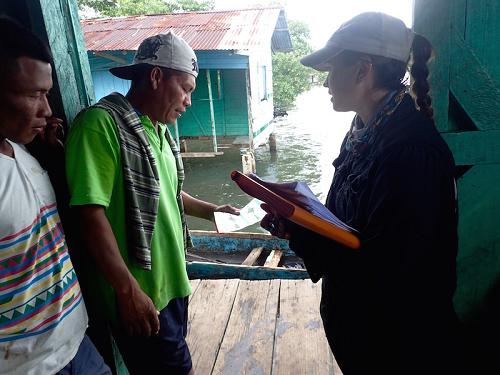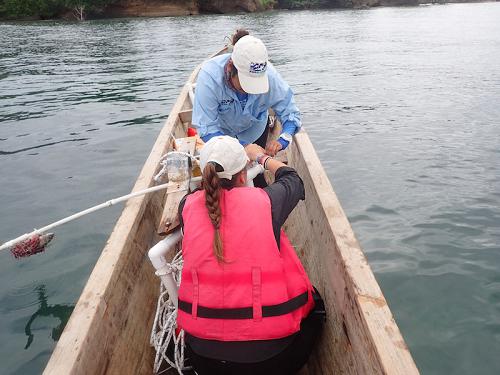Megan Gabriela Chevis
Other projects
Using standardized fisheries-dependent and fisheries-independent methods, this project aims to establish a baseline of sharks and rays at key sites in the Panamanian Caribbean.

Project coordinator Megan Chevis interviewing traditional fishers in the Bocas del Toro province about sightings and captures of sawfish.
While elasmobranch (sharks and rays) populations currently face various threats worldwide, a lack of knowledge on the status of these populations hinders the creation of effective management and conservation schemes. Though Panama hosts high marine biodiversity on its Caribbean and Pacific coasts, there have been few quantitative studies to establish a baseline for sharks and rays.

Gabriela Ochoa and Megan Chevis preparing a BRUV (Baited Remote Underwater Video) for deployment in Bocas del Toro.
During this project artisanal fishers and dive centers in Caribbean communities will be surveyed in order to gain a greater understanding of the role sharks and rays play in the fishing and tourism industries, details on distribution, diversity, and perceived abundance of species, and perceptions on the status of elasmobranch populations. One group of elasmobranchs that we hope to address with this project is the critically endangered sawfish (Family Pristidae). There is an urgent need for information regarding the presence and abundance of sawfish across the globe, and surveys with current and former fishers will provide information on the historical presence of these animals and determine the possibility of current existence.
To further evaluate the relative abundance and diversity of elasmobranchs, BRUVs (Baited Remote Underwater Videos) and underwater visual censuses will be employed. These non-invasive techniques allow for a relatively rapid assessment of marine communities at multiple sites.
This project will ultimately set the groundwork for long-term monitoring and management of elasmobranch populations in Panama and raise awareness of the need for effective management of populations. Data collected from the surveys will provide a snapshot of fisheries-dependent contemporary and historical use of elasmobranchs, while the field monitoring will establish fisheries-independent baselines for shark and ray populations in several key coastal sites. These data will not only provide a measure for all conservation efforts but also significantly help to fill gaps in our knowledge of Caribbean sharks and rays.